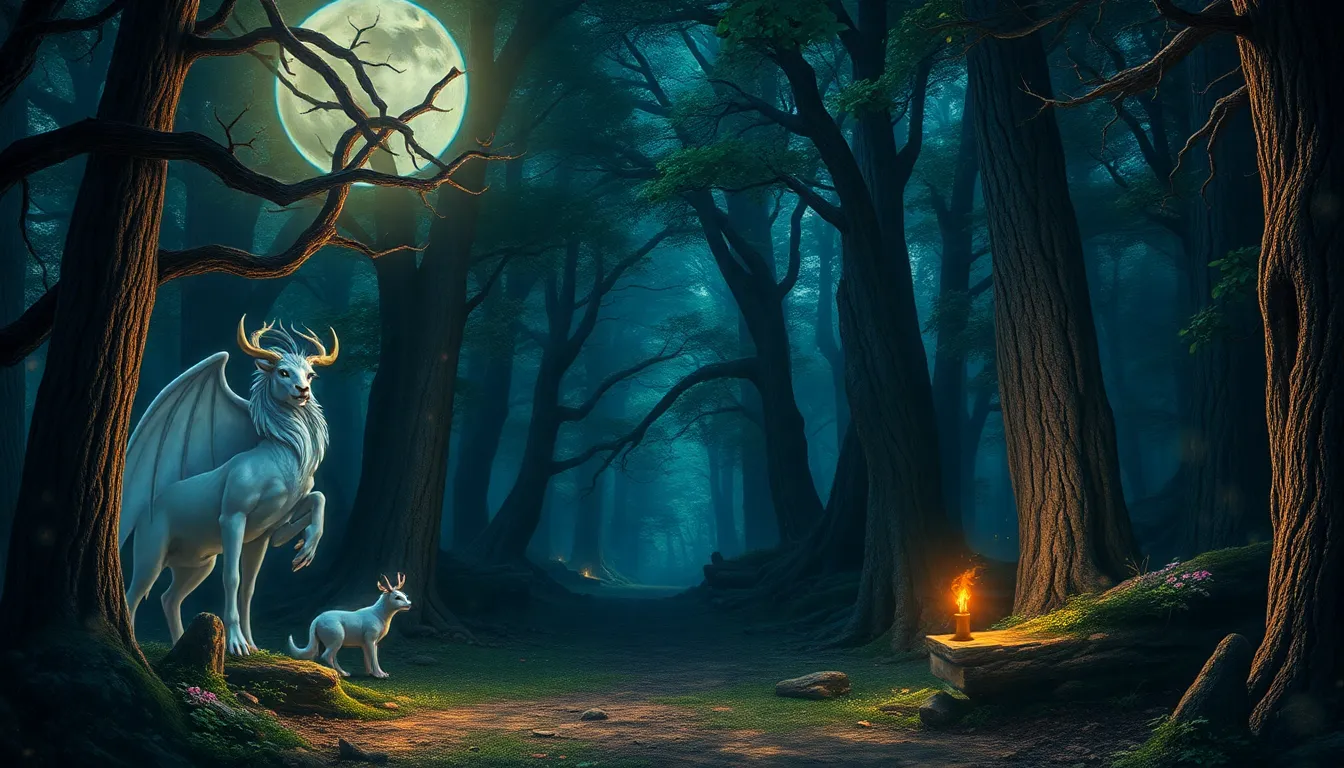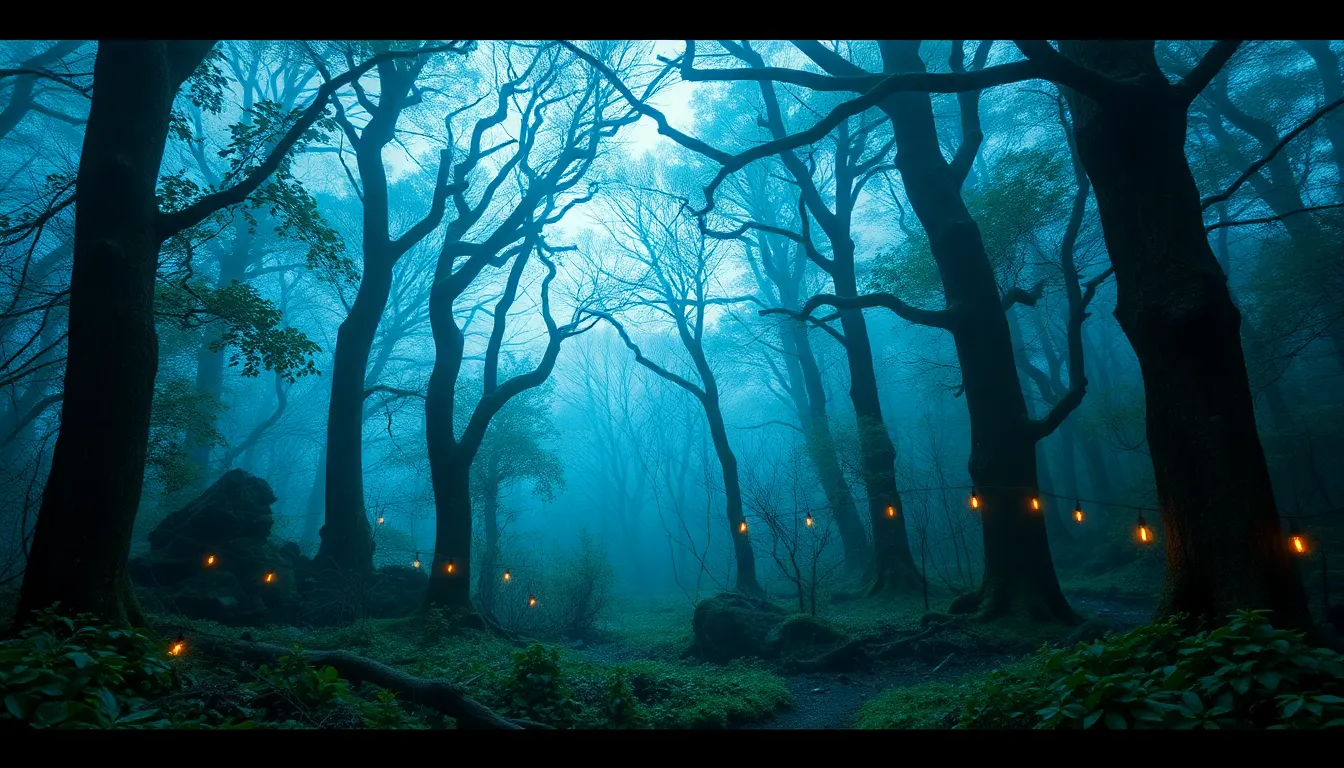Legends of the Enchanted Forest: Mythical Beings and Their Stories
I. Introduction to the Enchanted Forest
The concept of enchanted forests has fascinated humanity for centuries. These mystical woodlands are often depicted in folklore as places where the ordinary meets the extraordinary, where mythical beings reside, and where nature holds secrets waiting to be discovered. Enchanted forests symbolize the deep connection between humans and nature, serving as a backdrop for countless tales of adventure, magic, and transformation.
This article aims to explore the rich tapestry of legends surrounding enchanted forests, delving into the mythical beings that inhabit these realms and the stories that have emerged through time. By examining the origins, characteristics, and modern interpretations of these legends, we can appreciate their significance in our cultural heritage.
II. The Origins of Enchanted Forest Legends
Legends of enchanted forests can be traced back to various cultures around the globe. These myths often emerge from the historical context of a society’s relationship with nature. In many early civilizations, forests were seen as both sacred and dangerous, places where the divine and the demonic coexisted.
Throughout history, forests have inspired countless stories, often reflecting humanity’s fears, hopes, and understanding of the natural world. The mysteries of the woods have led to the creation of tales that highlight the dual nature of existence, showcasing the beauty and peril that nature can present.
III. The Guardians of the Forest: Fairies and Elves
Among the most beloved inhabitants of enchanted forests are fairies and elves. These beings vary significantly across cultures in terms of their characteristics and roles.
- Fairies: Often depicted as small, ethereal beings with wings, fairies are known for their magical abilities. In European folklore, they are seen as guardians of nature, capable of both blessing and cursing humans based on their actions.
- Elves: Typically portrayed as wise and strong, elves are closely linked to the natural world. In Norse mythology, they are considered protectors of the forests, embodying a deeper connection to the earth.
Both fairies and elves serve as reminders of the enchantment that nature holds, often acting as intermediaries between the human realm and the mystical world.
IV. The Mystical Creatures: Unicorns and Dragons
Unicorns and dragons are two of the most iconic creatures associated with enchanted forests. Their representations in folklore are rich with symbolism and meaning.
- Unicorns: Symbolizing purity and grace, unicorns are often seen as elusive beings that can only be approached by those who are pure of heart. They embody the beauty and magic of nature, often serving as a metaphor for the unattainable.
- Dragons: Conversely, dragons possess a dual nature. In many cultures, they are seen as protectors of treasures or sacred places, while in others, they are depicted as fearsome creatures that wreak havoc. This duality reflects the complexity of nature itself—capable of creation and destruction.
V. Shape-Shifters and Tricksters: The Cunning Beings
Shape-shifters and trickster figures play a crucial role in the mythology of enchanted forests. These beings often challenge the boundaries between different realms and teach valuable lessons through their cunning.
Notable trickster figures include:
- Raven: In many Native American traditions, the raven is a shape-shifter and a trickster known for its cleverness and ability to navigate the complexities of existence.
- Loki: In Norse mythology, Loki is a notorious trickster who embodies chaos and change, often transforming his appearance to achieve his goals.
These stories highlight the unpredictability of nature and the importance of adaptability in the face of challenges.
VI. Spirits of the Forest: Nature Deities and Elementals
Nature spirits and elementals are integral to the legends of enchanted forests. These beings represent the various forces of nature and are often called upon for protection and guidance.
Key aspects of nature spirits include:
- Elementals: These beings are often associated with the four elements: earth, water, fire, and air. They embody the essence of nature and are considered guardians of their respective domains.
- Nature deities: Many cultures have deities that personify natural phenomena, such as trees, rivers, and mountains. These spirits are revered and respected, reflecting humanity’s acknowledgment of nature’s power.
Stories of elementals often illustrate the delicate balance between humanity and the natural world, emphasizing respect and harmony.
VII. The Dark Side of the Enchanted Forest: Malevolent Beings
Not all beings in enchanted forests are benevolent. Legends abound of witches, cursed spirits, and malevolent entities that can bring misfortune to unsuspecting travelers.
Common themes include:
- Witches: Often depicted as wielders of dark magic, witches are frequently associated with the forest. Their abilities to manipulate nature can be seen as both a gift and a curse.
- Cursed beings: Many tales involve individuals transformed into malevolent creatures due to their actions or the wrath of nature spirits, serving as cautionary tales about the consequences of disrespecting the natural world.
These stories reflect the fears and superstitions that have arisen from humanity’s relationship with the unknown aspects of nature.
VIII. Famous Legends from Around the World
Enchanted forests have inspired countless legends across various cultures, each offering unique insights into human nature and the environment.
Some notable legends include:
- The Green Man: A symbol of rebirth and nature’s cycle in Celtic mythology, often depicted as a face surrounded by leaves.
- The Baba Yaga: A Slavic folklore character who lives in a forest hut on chicken legs, embodying the dual nature of wisdom and danger.
- Japanese Yōkai: Creatures from Japanese folklore that inhabit forests, often representing the spirits of the natural world.
A comparative analysis of these legends reveals common themes such as the interplay between humanity and nature, the struggle between good and evil, and the importance of respecting the environment.
IX. Modern Interpretations and Adaptations
The influence of enchanted forest legends is prevalent in contemporary media, from literature to film and video games. These adaptations often preserve the core elements of the original tales while introducing new interpretations.
Modern storytelling techniques include:
- Fantasy literature: Authors like J.R.R. Tolkien and J.K. Rowling have drawn upon enchanted forest motifs to create rich narratives that resonate with audiences.
- Film adaptations: Movies such as “Pan’s Labyrinth” and Disney’s “Frozen” incorporate enchanted forests, blending traditional folklore with modern themes.
These adaptations not only keep the legends alive but also allow for exploration of contemporary issues such as environmentalism and identity.
X. Conclusion: The Enduring Legacy of the Enchanted Forest
Enchanted forests continue to captivate our imagination, serving as a reminder of the intricate relationship between humanity and nature. The mythical beings that inhabit these realms offer insight into our collective consciousness, reflecting our fears, hopes, and dreams.
As we navigate the complexities of modern life, the allure of enchanted forests endures, inviting us to explore the magic of the natural world and the timeless stories that emerge from it. From folklore to modern adaptations, the legacy of the enchanted forest remains a vital part of our cultural narrative, encouraging us to reconnect with the wonders of nature.



